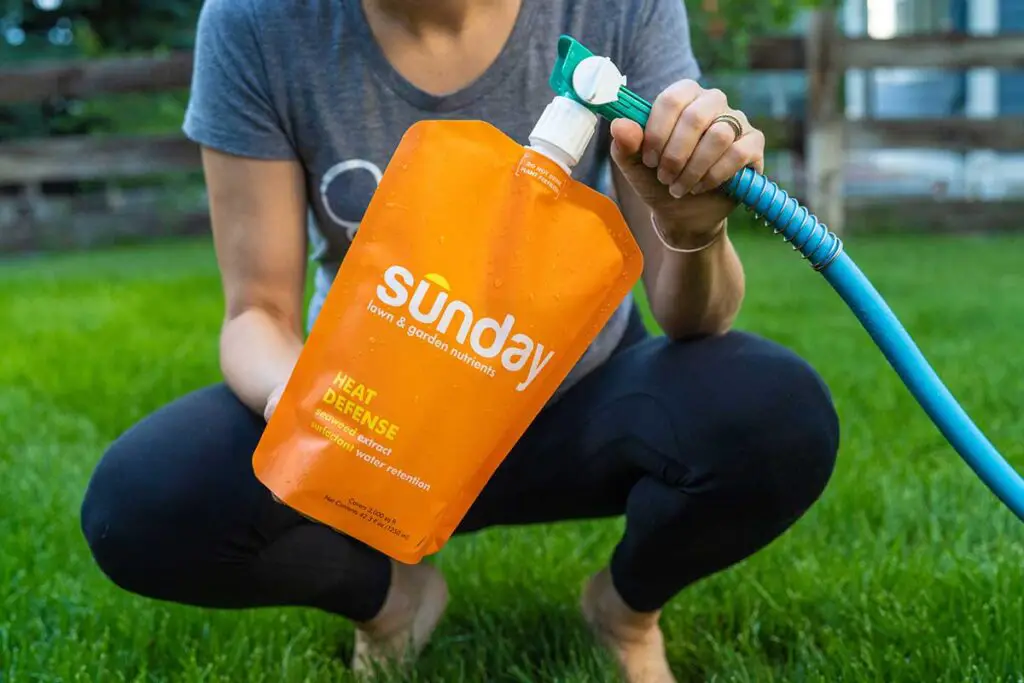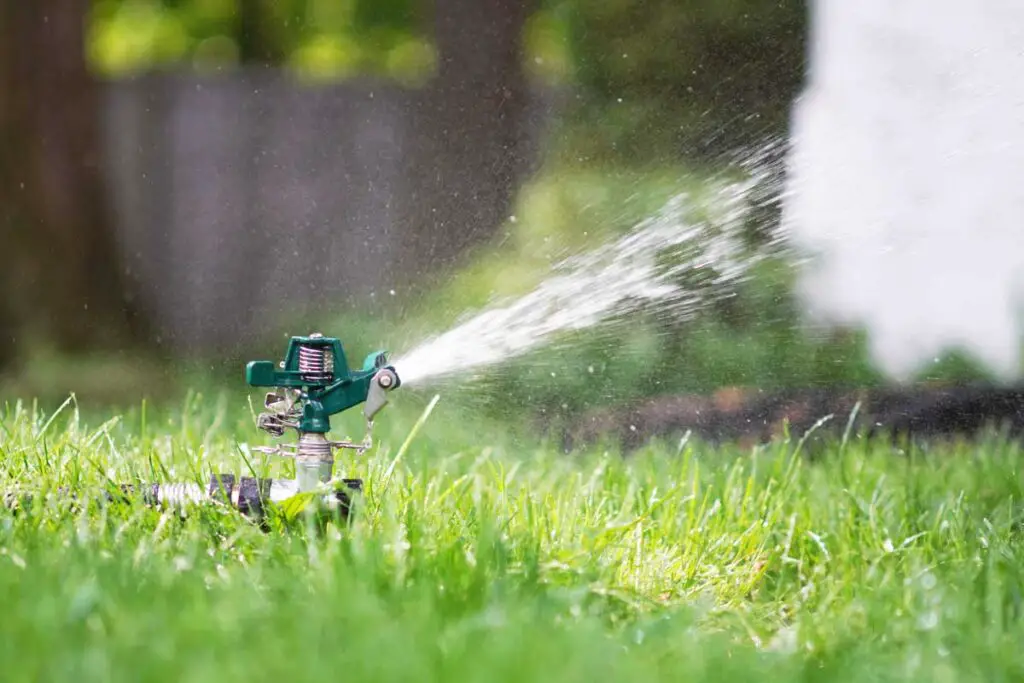When it comes to having a beautiful lawn, there’s no doubt that it takes some work. But with the right knowledge and tools, anyone can achieve the perfect grass this summer. Whether you’re a seasoned gardener or a beginner, there are a few simple steps you can take to get the lawn of your dreams.
One of the most important things you can do to get perfect grass is to fertilize it at the right time. According to experts, the best time to fertilize warm-season grass is in the early summer when the temperature is around 70 degrees Fahrenheit or less. This will make your grass more heat and drought-resistant, which is especially important during the hot summer months. However, it’s crucial to be careful not to apply too much fertilizer, as this can actually scorch your lawn.
Preparing Your Lawn
To get perfect grass this summer, it’s important to prepare your lawn properly. This means clearing debris and weeds, aerating your lawn, and fertilizing your lawn. By following these steps, you can ensure that your grass is healthy and lush throughout the summer months.
Clearing Debris and Weeds
Before you can start preparing your lawn, you need to clear away any debris and weeds. This includes removing any fallen leaves, branches, and other debris that may have accumulated over the winter months. You should also pull any weeds that have started to grow, making sure to remove the entire root system.
Aerating Your Lawn
Aerating your lawn is an important step in preparing your grass for the summer months. This process involves creating small holes in the soil to allow air, water, and nutrients to reach the roots of your grass. You can use a manual or motorized aerator to do this, or you can hire a professional to do it for you.
Fertilizing Your Lawn
Fertilizing your lawn is crucial to ensuring that your grass is healthy and lush throughout the summer months. You should fertilize your lawn at least twice a year, once in the spring and once in the fall. If you have warm-season grass, you should fertilize in the early summer when the temperature is around 70 degrees Fahrenheit or less. For cool-season grasses, fertilize during early spring and at the onset of fall.
When choosing a fertilizer, look for one that is specifically designed for your type of grass. You should also consider the nutrient content of the fertilizer, as well as the application rate and timing. Be careful not to apply too much fertilizer, as this can damage your lawn.
By following these steps, you can prepare your lawn for the summer months and ensure that your grass is healthy and lush all season long.

Custom Lawn Plan
Creating a custom lawn plan is an effective way to get perfect grass this summer. By analyzing the lawn’s current condition, a custom lawn plan can provide the necessary steps to follow to achieve a lush, green lawn.
Get Lawn Analysis
The first step in creating a custom lawn plan is to get a lawn analysis. Lawn care companies like Sunday Lawn Care provide a free soil test kit that can be used to determine the lawn’s pH level, nutrient content, and other important factors that affect grass growth. The results of the soil test can be used to create a custom lawn plan that addresses any deficiencies and promotes healthy grass growth.
Once the soil test results are in, the custom lawn plan can be created. The plan should include specific instructions on when and how to fertilize, water, and mow the lawn. It should also take into account the lawn’s specific needs, such as the type of grass, the amount of sunlight, and the climate in the region.
To ensure the success of the custom lawn plan, it is important to follow the instructions carefully. This may include adjusting watering and mowing schedules based on weather conditions and monitoring the lawn’s progress regularly.
In addition to providing a custom lawn plan, lawn care companies like Sunday also offer ongoing support and advice to help homeowners maintain a healthy, green lawn. By following a custom lawn plan and taking advantage of professional support, homeowners can achieve perfect grass this summer and enjoy a beautiful lawn for years to come.
Sunday Lawn Care even offers a free custom lawn analysis when you input your address on their website.

Watering Your Lawn
A lush, green lawn is a beautiful addition to any home. However, achieving the perfect grass requires proper watering techniques. Here are some tips to help you water your lawn effectively this summer.
How Often to Water Your Lawn
The frequency of watering your lawn depends on several factors, including the type of grass, soil, and weather conditions. In general, it is recommended to water your lawn once or twice a week, giving your grass 1 to 1.5 inches of water each time. However, you should adjust the frequency of watering based on the following factors:
- Soil Type: Sandy soil drains water faster than clay soil, which retains water longer. Thus, sandy soil requires more frequent watering than clay soil.
- Grass Type: Different grass types have different water requirements. For example, Bermuda grass needs more water than Zoysia grass.
- Weather Conditions: During hot and dry weather, your lawn may require more frequent watering to prevent it from drying out.
Best Time of Day to Water Your Lawn
The best time to water your lawn is early in the morning, between 6 and 10 a.m. This is because the temperature is cooler, and the wind is usually calm, which reduces water evaporation and ensures that the water reaches the roots of the grass. Avoid watering your lawn in the evening or at night as this can promote the growth of fungi and other lawn diseases.
Watering Techniques
There are several watering techniques you can use to ensure that your lawn gets the right amount of water:
- Sprinklers: Sprinklers are an excellent way to water your lawn. They distribute water evenly and can cover large areas. However, you should adjust the sprinkler settings based on the size of your lawn and the type of grass.
- Drip Irrigation: Drip irrigation is a great way to water your lawn if you have a small yard or want to conserve water. It delivers water slowly and directly to the roots of the grass, reducing water waste.
- Hand Watering: Hand watering is a simple and effective way to water small areas of your lawn. You can use a hose with a spray nozzle to water the grass evenly.
In conclusion, watering your lawn properly is essential to achieving the perfect grass. By following these tips, you can ensure that your lawn stays healthy and green throughout the summer.

Mowing Your Lawn
Mowing your lawn is an essential task to maintain a healthy and beautiful lawn. Here are some tips to help you mow your lawn correctly.
Choosing the Right Lawn Mower
When choosing a lawn mower, it is essential to consider the size and type of your lawn. For smaller lawns, a push mower or a reel mower might be sufficient. For larger lawns, a riding mower or a zero-turn mower might be a better option.
Electric mowers are also an excellent choice for those who want a more eco-friendly option. They are quiet, efficient, and require less maintenance than gas mowers.
Mowing Height
The height at which you mow your lawn can significantly impact its health and appearance. Different grass types have different optimal mowing heights. For example, Bermuda grass should be mowed at around 1 to 1.5 inches, while Kentucky bluegrass should be mowed at around 2.5 to 3.5 inches.
It is generally recommended to mow no more than one-third of the grass blade at a time. Mowing too short can damage the grass and make it more susceptible to disease and pests.
Mowing Frequency
The frequency at which you mow your lawn depends on the growth rate of your grass. During the summer months, grass tends to grow faster, so you might need to mow more frequently.
As a general rule, you should aim to mow your lawn once a week. However, if your grass is growing faster than usual, you might need to mow more frequently to keep it at the optimal height.
It is also essential to keep your mower blades sharp. Dull blades can tear the grass instead of cutting it, which can damage the grass and make it more susceptible to disease.
In conclusion, mowing your lawn correctly is crucial to maintaining a healthy and beautiful lawn. By choosing the right lawn mower, mowing at the optimal height, and mowing frequently, you can keep your lawn looking its best all summer long.

Protecting Your Lawn
To achieve a perfect lawn this summer, it is important to protect it from pests and diseases. Here are some tips on how to keep your lawn healthy and green.
Pest Control
Pests such as grubs, chinch bugs, and armyworms can cause significant damage to your lawn if left untreated. Here are some ways to prevent and control pests:
- Use natural predators: Encourage natural predators such as birds, ladybugs, and praying mantis to your lawn to control pests.
- Apply nematodes: Nematodes are microscopic worms that can be applied to your lawn to control pests. They are safe for humans, pets, and the environment.
- Use insecticides: If natural predators and nematodes are not enough, you can use insecticides to control pests. Be sure to read the label carefully and follow the instructions.
Disease Prevention
Diseases such as brown patch, dollar spot, and powdery mildew can also damage your lawn. Here are some ways to prevent and control diseases:
- Water properly: Water your lawn deeply and infrequently to promote deep root growth and prevent diseases.
- Mow correctly: Mow your lawn to the appropriate height for your grass type. Mowing too short can stress the grass and make it more susceptible to diseases.
- Fertilize appropriately: Over-fertilizing can also stress your lawn and make it more susceptible to diseases. Use a slow-release fertilizer and follow the instructions carefully.
- Use fungicides: If diseases are a persistent problem, you can use fungicides to control them. Again, read the label carefully and follow the instructions.
By following these tips, you can protect your lawn from pests and diseases and achieve a perfect lawn this summer.

Common Lawn Problems: Solutions for a Lush and Healthy Lawn
Lawn problems are a common issue that many homeowners face. Whether it’s brown patches, weeds, or pests, these issues can be frustrating and difficult to deal with. Fortunately, there are solutions to these problems that can help homeowners maintain a healthy and beautiful lawn.
Identifying Common Lawn Problems
When it comes to maintaining a healthy and beautiful lawn, it’s important to be able to identify common lawn problems. This can help you take the necessary steps to prevent and treat these issues, ensuring that your lawn stays lush and green all year round.
Weeds
Weeds are one of the most common lawn problems. They can quickly take over your lawn, stealing nutrients and water from your grass. Some of the most common types of weeds include dandelions, crabgrass, and clover.
To identify weeds, look for plants that are growing in areas where you didn’t plant anything. Weeds often have different leaves and flowers than your grass, making them easy to spot. You can also use a weed identification guide to help you identify specific types of weeds.
Diseases
Lawn diseases can be caused by various factors, including fungi, bacteria, and viruses. Some of the most common lawn diseases include brown patch, dollar spot, and powdery mildew.
To identify lawn diseases, look for unusual discoloration or patterns in your grass. You may also notice patches of dead or dying grass. If you’re not sure what’s causing the problem, you can take a sample of your grass to a local garden center or university extension service for diagnosis.
Pests
Pests can also cause damage to your lawn. Some of the most common lawn pests include grubs, chinch bugs, and armyworms.
To identify lawn pests, look for signs of damage to your grass, such as chewed leaves or brown patches. You may also notice insects crawling on your grass or flying around your lawn.
By being able to identify common lawn problems, you can take the necessary steps to prevent and treat these issues. This can help you maintain a healthy and beautiful lawn all year round.
Solutions for Common Lawn Problems
Lawn problems can be frustrating, but fortunately, there are solutions to many of the most common issues. Whether you’re dealing with pests, diseases, or other problems, there are steps you can take to restore your lawn to health.
Preventative Measures
One of the best ways to deal with lawn problems is to prevent them from happening in the first place. Here are some preventative measures you can take:
- Mow your lawn regularly to keep it at the recommended height for your grass type.
- Water your lawn deeply and infrequently, rather than shallowly and frequently.
- Fertilize your lawn according to the recommended schedule for your grass type.
- Aerate your lawn to improve soil drainage and reduce soil compaction.
- Overseed your lawn to promote healthy growth and fill in bare spots.
Chemical Treatments
If preventative measures aren’t enough to solve your lawn problems, chemical treatments may be necessary. Here are some common chemical treatments for lawn problems:
- Herbicides can be used to control weeds.
- Insecticides can be used to control pests like grubs and chinch bugs.
- Fungicides can be used to control fungal diseases like brown patch and dollar spot.
When using chemical treatments, be sure to follow the instructions carefully and use protective gear as recommended.
Natural Remedies
If you prefer to avoid using chemicals on your lawn, there are also natural remedies you can try. Here are some natural remedies for common lawn problems:
- Neem oil can be used to control pests like aphids and mites.
- Compost tea can be used to promote healthy soil and reduce the risk of disease.
- Beneficial nematodes can be used to control pests like grubs and chinch bugs.
While natural remedies may take longer to see results, they can be effective and are often safer for the environment.
Conclusion
Achieving the perfect lawn requires a combination of consistent care, proper maintenance, and attention to detail. By following the tips and advice provided in this article, homeowners can ensure that their lawns are healthy, lush, and vibrant throughout the summer months.
Regular mowing, watering, and fertilizing are essential for maintaining a healthy lawn, but there are many other factors to consider as well. For example, homeowners should be mindful of the type of grass they have and its specific needs, as different varieties require different amounts of water, sunlight, and nutrients.
In addition, homeowners should take steps to prevent weeds, pests, and other common lawn problems. This may include using weed killers, insecticides, and other treatments as needed, as well as keeping an eye out for signs of damage or disease.
Overall, the key to getting perfect grass this summer is to be proactive, diligent, and consistent in your lawn care efforts. With the right tools, knowledge, and approach, anyone can achieve a beautiful, healthy lawn that will be the envy of the neighborhood.





